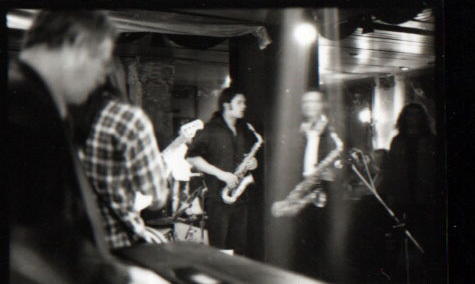
Nathan Haines & The Enforcers, Cause Celebre, with Murray McNabb, Joel Haines, Ben Holmes and Nathan Haines.
To isolate a particular period in a city’s music scene is always going to leave loose threads and mischaracterise a cultural milieu as distinctive, rather than continuing on from what came before it and flowing steadily on into what followed. Not only that, but one person’s recollection of an entire scene is bound to be unreliable – particularly when that one person is me.
Even so, it’s certainly true that there were several disruptive changes to the local jazz scene in Auckland in the late 1990s, each of which contributed in its own way to a particular flavour of the time, and arguably a particular sound to the music coming out of the recording studios, cafes and bars around the inner city.
For two of these influences, I was at least partially responsible. I produced a couple of nationally broadcast, New Zealand On Air funded radio programmes featuring new recordings of local jazz music, and I also co-ran (into the ground) a small independent jazz record label out of my apartment in Lorne Street.
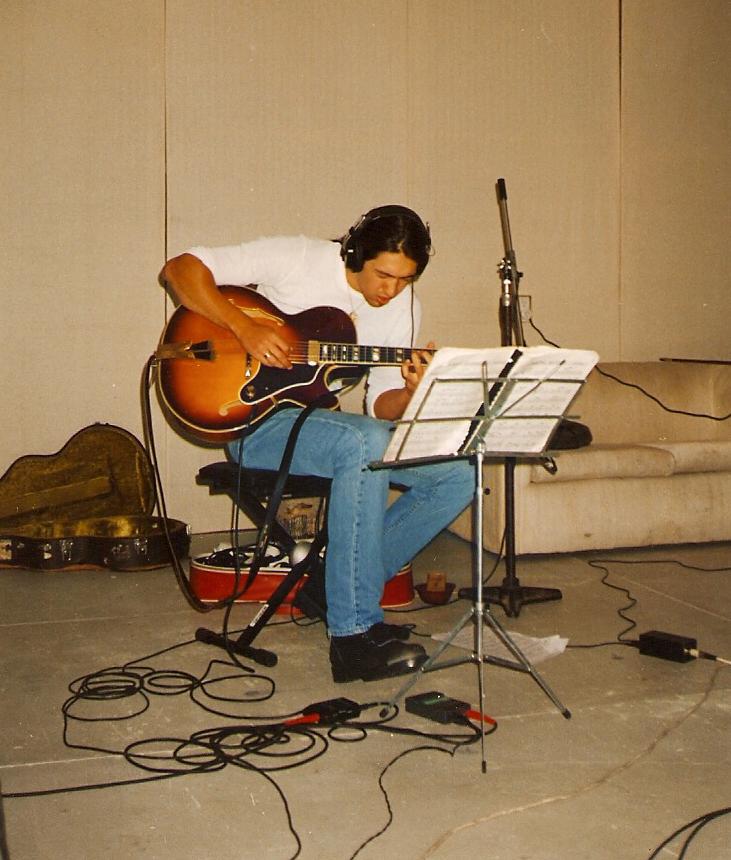
Of course, jazz was going on in the city long before these things happened, and many of the ways in which they were going on continued throughout that period. For instance, the London Bar, opposite the Civic Theatre on the corner of Queen and Wellesley Streets, provided a long established home for what many of us thought of as ‘the old guard’ of local jazz. The late bassist Andy Brown was musical director for this regular slot, and for many years it provided a reliable gig for some of the more established performers around town, including Tony Hopkins (drums), Kevin Haines (bass), Crombie Murdoch (piano), Frank Conway (drums), Alberto Santarelli (bass), Brian Smith (tenor sax, flute), Kevin Field (piano), Kim Paterson (trumpet), Frank Gibson Jr (drums), Julie Mason (piano & vox), Phil Broadhurst (piano) and others.
Transformations in the inner-city
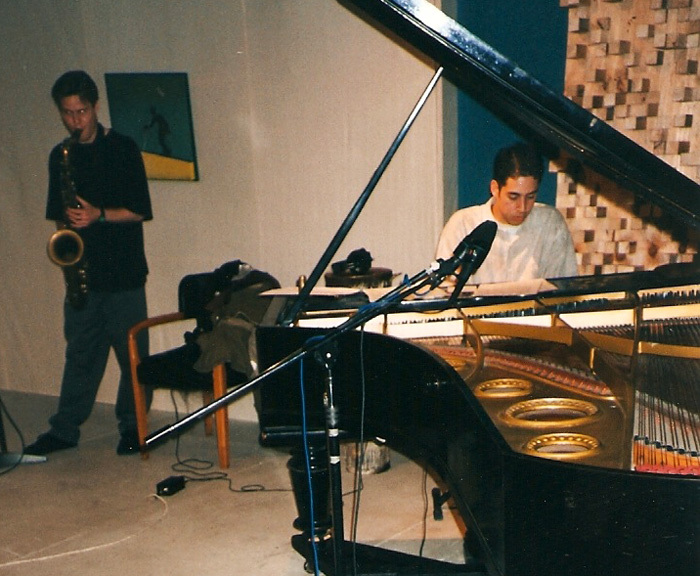
Mark de Clive-Lowe recording in Auckland
But from 1992, Auckland was undergoing a rapid process of radical change, culturally, socially, infrastructurally and of course economically. The CBD had seen the first tentative influx of inner-city residents. The territory marked out by High Street, Lorne Street and Vulcan Lane was establishing itself as the heart of urbane café culture as well as the centre for young jazz nightlife, where those inner-city sophisticates hip to hip-hop could catch sax player Nathan Haines and then-rapper Zane Lowe shoulder to shoulder at Cause Celebre.
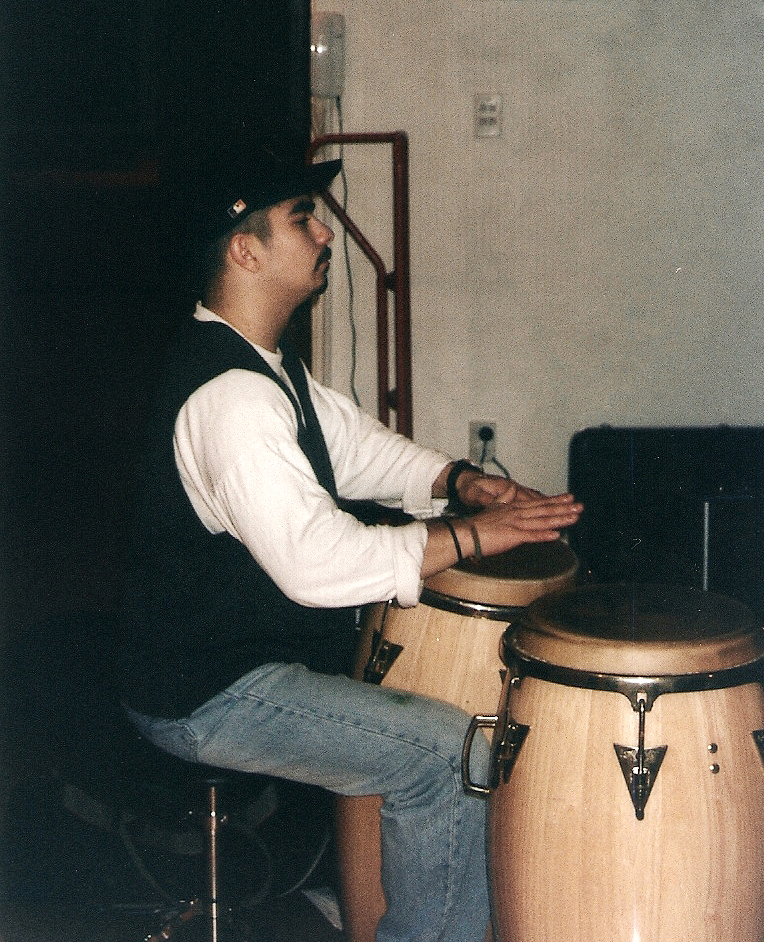
The NEW Gallery opened and sought to feature thoughtful evening programming alongside its contemporary art exhibitions. Deschlers bar on High Street was established as a venue for a range of music events and jazz was a regular feature of its tiny stage in the street front window. Manifesto bar and wine cellar opened on Queen Street and made the most of the popularity and overspill of clientele from its neighbour, the Classic – a comedy club built in what had previously been a prominent porn cinema.
The Young Lions
there was a sudden increase in opportunity, activity, popularity, calibre and friction in Auckland jazz.
And as those things were being established, several emerging local players (collectively performing as "The Young Lions") – pianist Mark de Clive-Lowe, sax player Jason Jones, guitarist Greg Tuohey and bassist Matt Penman – were spending a year out of the country to study at Berklee College of Music in Boston. Whether their return simply coincided with or actually provided the catalyst for a series of changes in the dynamics of the local scene is debatable. It’s certainly true that there was a sudden increase in opportunity, activity, popularity, calibre and (perhaps counter-intuitively) friction in Auckland jazz.
Young musicians with an abundance of energy, expectation and ambition were injected into a scene that had fallen into some recurring patterns.
Against this backdrop, I was a sound engineer and radio producer who had been going slowly mad producing endless 30-second commercials for Radio Pacific – a talk radio station with a target demographic of what we jokingly referred to as “70 to dead”. To inject a bit of a challenge into my work life, I had taken it upon myself to research, write and produce a comprehensive history of jazz in 26 weekly one-hour episodes. I knew very little about jazz, but managed to stay a couple of weeks ahead of the audience and ended up with a sizable collection of compact discs in the process – as well as a series of anecdotes that enabled me to appear knowledgeable in jazz company.
Off The Record
When I left Pacific in 1995, one of my first projects as an independent was a New Zealand On Air funded radio series called Off The Record: The Kiwi Jazz Show. Produced at Progressive Recording Studios in Anzac Ave in partnership with Tim Gummer, the show was hosted by drummer Tony Hopkins, who also took on the role of musical director, for the simple reason that he knew all of the musicians and could invite them onto the programme. The fact that he was also a natural host, an easy raconteur and an adaptable player was certainly an added bonus.
The format was straightforward: Tony would interview a particular artist, and they would speak for a while about some aspect of their career, much of which would take the form of reminiscence. Tony would then invite the musician to play a song with him (“remember that old tune we used to play…?”) and a house band of invited players would round out the ensemble.
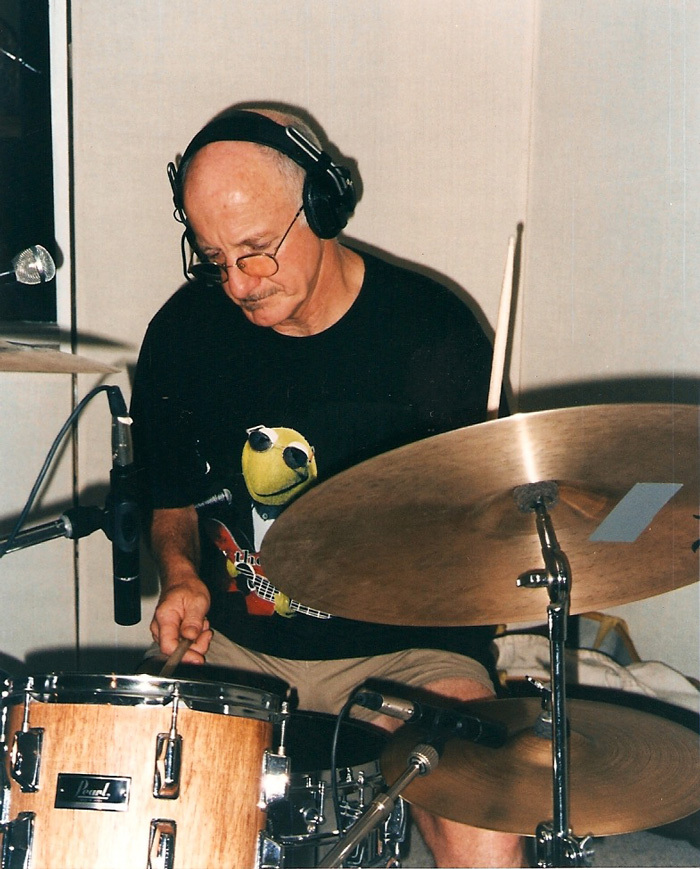
Each one-hour programme typically included five such songs – that is, new recordings of New Zealand musicians playing a mix of jazz standards and originals. Each group also recorded multiple and widely varying short versions of the song St Thomas, which we used as the show’s theme tune and interstitial music. We would also routinely record a sixth "spare" track for possible release, though there was, at first, no outlet for us to do that.
The first episode, broadcast in 1996, featured Brian Smith, who had recently had a very successful series of easy listening albums called Moonlight Sax. The show featured Kevin Field on piano and Max Stowers on electric bass, and the first tune on it was, perhaps appropriately, one of the earliest jazz "hits" in the canon, ‘Basin Street Blues’.
And while this was taking place, the Young Lions were returning to the scene.
Mark de Clive-Lowe and Jason Jones
A theory – one borne out by a conversation that took place in the Mark de Clive-Lowe and Jason Jones episode of Off The Record (perhaps a dozen programmes into the series) – is that immersion in an environment full of exceptional musicians, and exposure to a challenging young international contingent of world class players altered the aspirations of that small group of young jazz musicians in the Auckland scene.
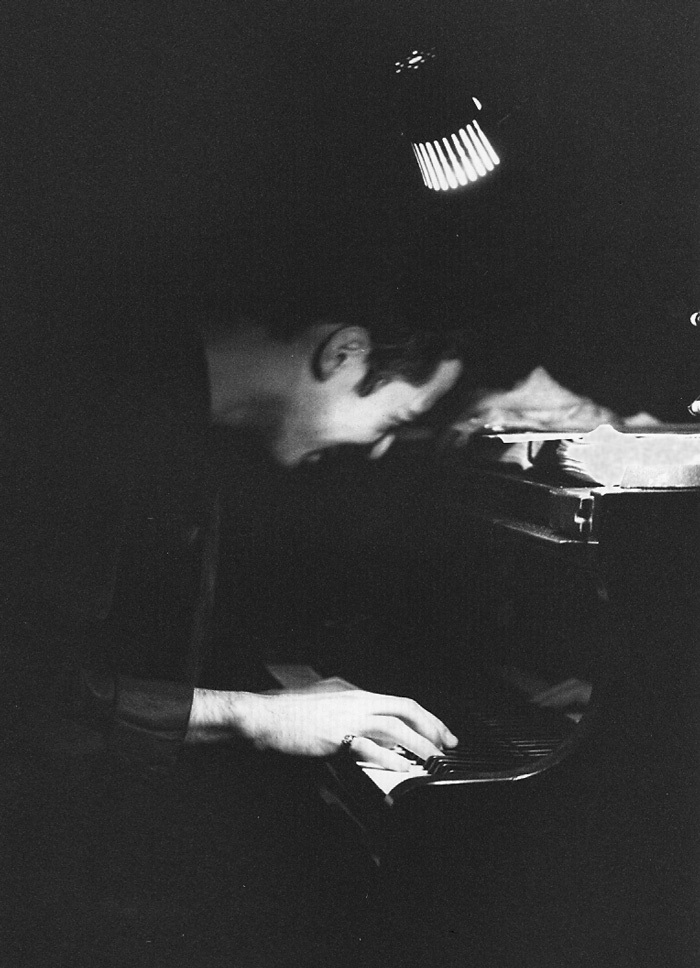
At 21 and 23 respectively, de Clive-Lowe and Jones returned to a city undergoing vibrant and exciting change, but with a jazz scene characterised by what would charitably be described as a status quo – and uncharitably as tired and underwhelming. These observations were neither particularly welcome, nor often terribly tactfully expressed.
An uncharacteristically pragmatic and business-minded type for a musician (the word “hustler” was often used to describe him), de Clive-Lowe set about establishing a circuit for himself and his preferred cadre of supporting musicians. Despite the dramatically increased availability of performance spaces and opportunities to both perform and record, competition and rivalry became – if not fierce, then at least palpable.
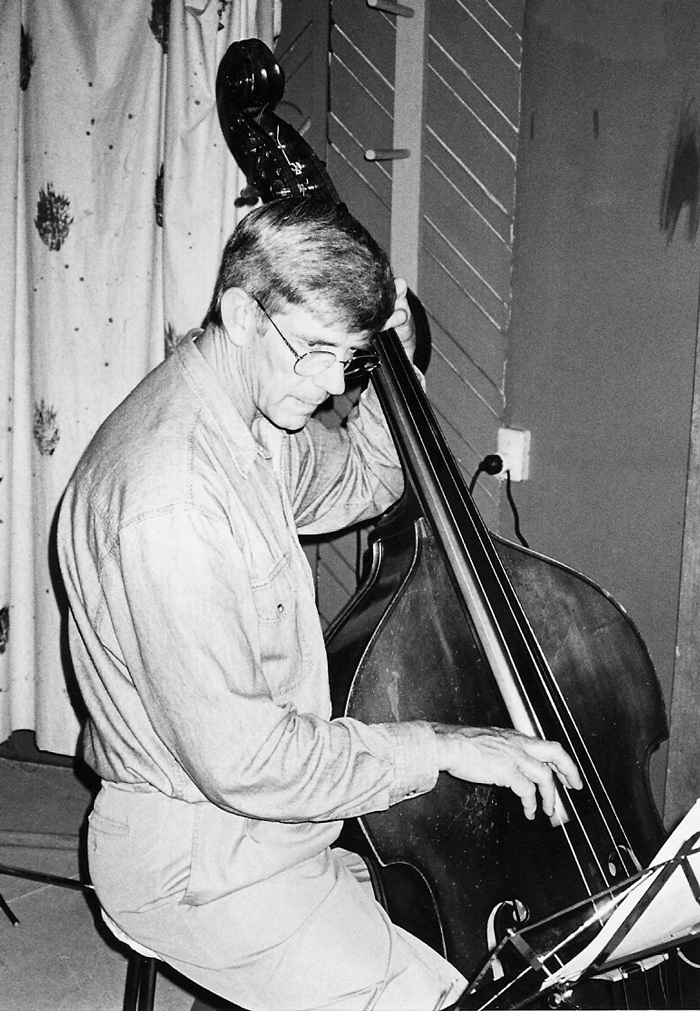
Jazz in the Present Tense would perform on the same night as Jazz in the Pacific Sense. Band members were fired from regular gigs that they had been responsible for booking. Two groups featuring the same bass player would be booked for the same slot in different venues – and so on. But as audiences, we were spoiled for choice.
In that period, streetfront cafés had live music for patrons during the long summer days; bars with large screens for sport would host jazz concerts; there was more than one jam session going on in town; experimental, improvised music had a small but loyal following.
Visiting musicians from the USA and Australia arrived more frequently, became active parts of the scene and collaborated with local players. And partly because of the radio show, partly in response to audience tastes and musical trends, but mostly because of the niche musician’s willingness to take any gig when it becomes available, local players were performing in previously unthinkable combinations that blended old and new.
Cause Celebre
Perhaps capturing and typifying the scene in 1990s Auckland jazz were the Cause Celebre bands. Between 1990 and 1997 each weekend the High Street nightclub stopped playing records around midnight or 1 am, and a band with a solid funk rhythm section (sometimes with two drummers), Latin percussionist, and sometimes a DJ and a rapper or two would perform to an enthusiastic crowd of young people who had come specifically to hear them, often until dawn. And they would dance.
Amongst the earliest and most inventive of these was Freebass, a band driven by the two Harrop brothers, Steve (bass) and Ben (trombone), which featured a huge and everchanging array of young musicians.
Their first album Raw was recorded live over three very busy weekends at Cause Celebre in November 1992 and released on Deepgrooves early the next year. It sold well.
Local jazz music (and this was jazz), for a brief moment, had a willing, receptive and engaged audience, thanks in large part to the activities of a few key "connectors" – Nathan Haines (with his band The Enforcers), Mark de Clive-Lowe and Tony Hopkins in particular, but there were others in what I thought of as satellite scenes (Kingsley Melhuish & Caitlin Smith both spring to mind).
TAP Records
TAP Records, the label I ran with Mark at that time, produced and released a couple of compilation albums that captured some of this activity. One of those compilations was supported by Manifesto Wine Cellar and featured many of the artists who played there; another brought together a series of musical highlights from the series Kiwi Jazz Tracks (the successor to Off the Record). We also produced a couple of Mark’s first records as a leader as well as trumpeter Kim Paterson’s decades overdue debut album Impending Journey.
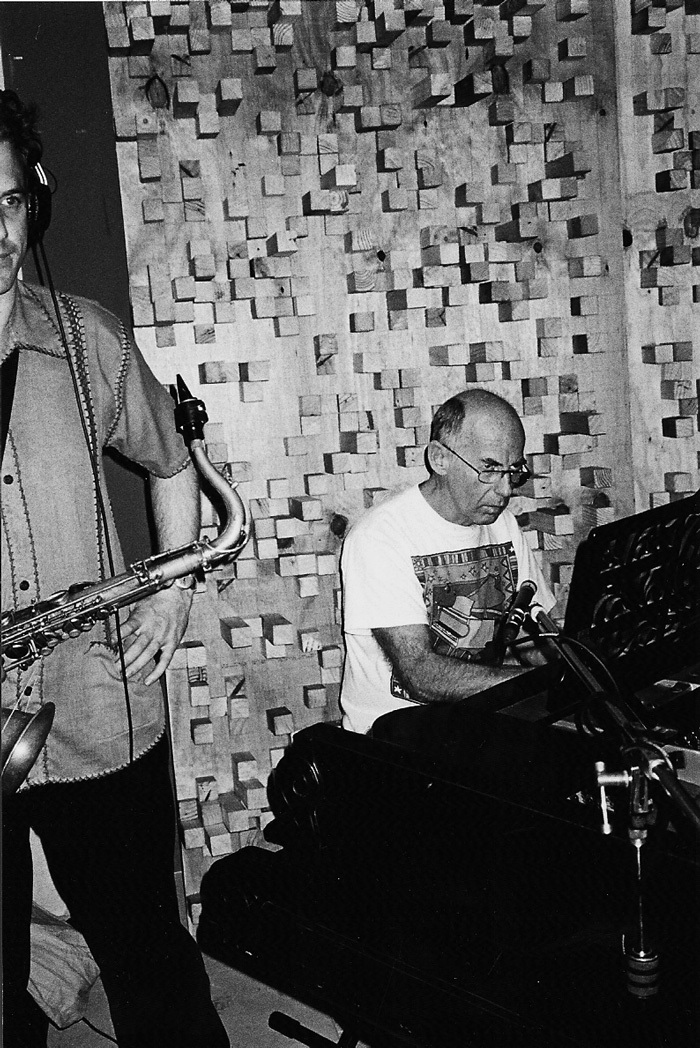
We enjoyed a brief period of solvency, and even dabbled early on with the notion of selling music online (these were pre-Napster days). We ran what we considered to be a successful promotion in which purchasers of a bottle of Drambuie from a particular nationwide chain of wine merchants would receive a complimentary copy of Kiwi Jazz Tracks Vol. 1.
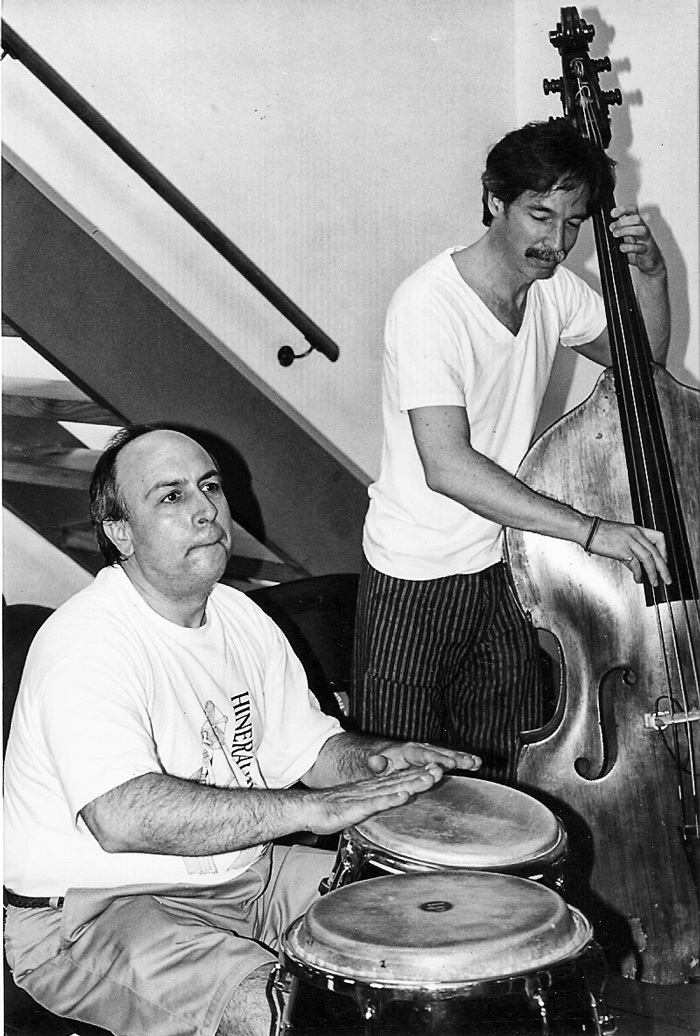
Miguel Fuentes and Pat O'Leary
Unfortunately, our distributor went bankrupt and much of our stock went missing in the process. And while selling full price local jazz CDs that sat on the Marbecks and Real Groovy shelves next to budget Miles Davis collections was never a particularly enlightened get-rich-quick strategy, the misfortune with the distributor tipped the balance and the label was forced to close. It had gone from an expensive hobby to a demoralising money pit in a very short space of time, as these things often do.
At the same time, New Zealand On Air declined funding for a second series of Kiwi Jazz Tracks as some of the radio support had dried up for the show; several cafés changed hands and stopped booking live music, and the scene changed again. That’s what happens to scenes. The perfect storm (and it had been stormy) of public taste, external influence, musical collaboration, local business activity, broadcasting policy and personal politics that had resulted in that vibrant, exciting and optimistic period in local jazz was dissipating.
But because of the opportunities the radio shows afforded, large parts of this scene have been captured. The music recordings exist – and so do many of the stories, as told by the artists themselves. Over time, with the permission of those involved, I’m looking forward to making these interviews and in-studio performances available to the AudioCulture archive – as well as to seeing the photographs and reading the memories and recollections of others from that scene in that period.
And those recollections will no doubt differ from mine.
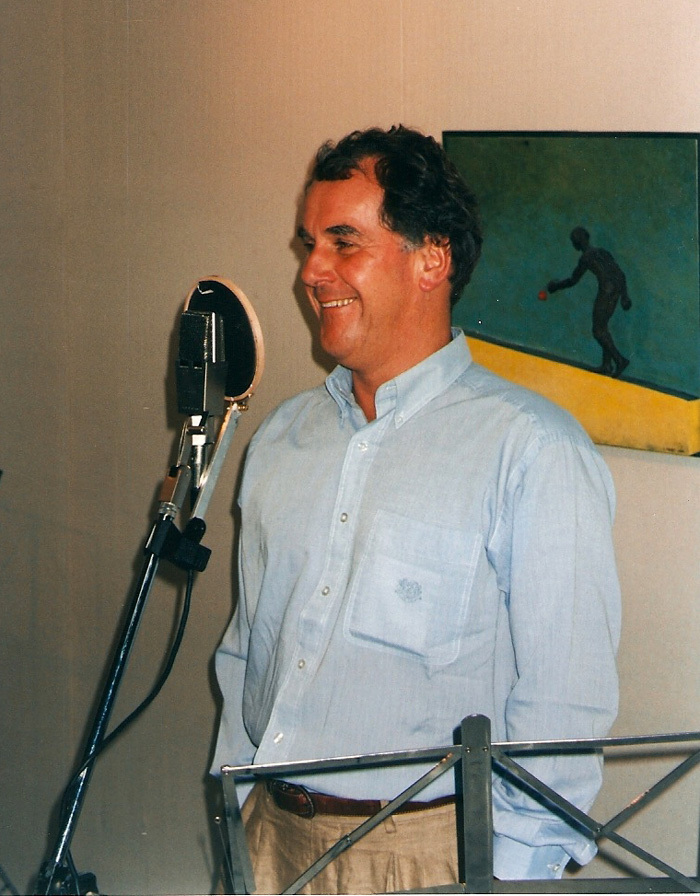
Freebass rediscovered
In April 2013 Auckland writer and archivist Peter McLennan discovered a copy of the second album by the 1990s jazz/hip-hop fusion act Freebass, Jazz Acidique, at The National Library. Recorded in 1993 and released only on very limited cassette, it was previously thought to be gone. Recorded in one all-night session, and featuring two members of Urban Disturbance, Ollie Green and a very young Zane Lowe (now one of the UK's top radio broadcasters), the album has now been retrieved and three tracks are featured here with the permission of Freebass.